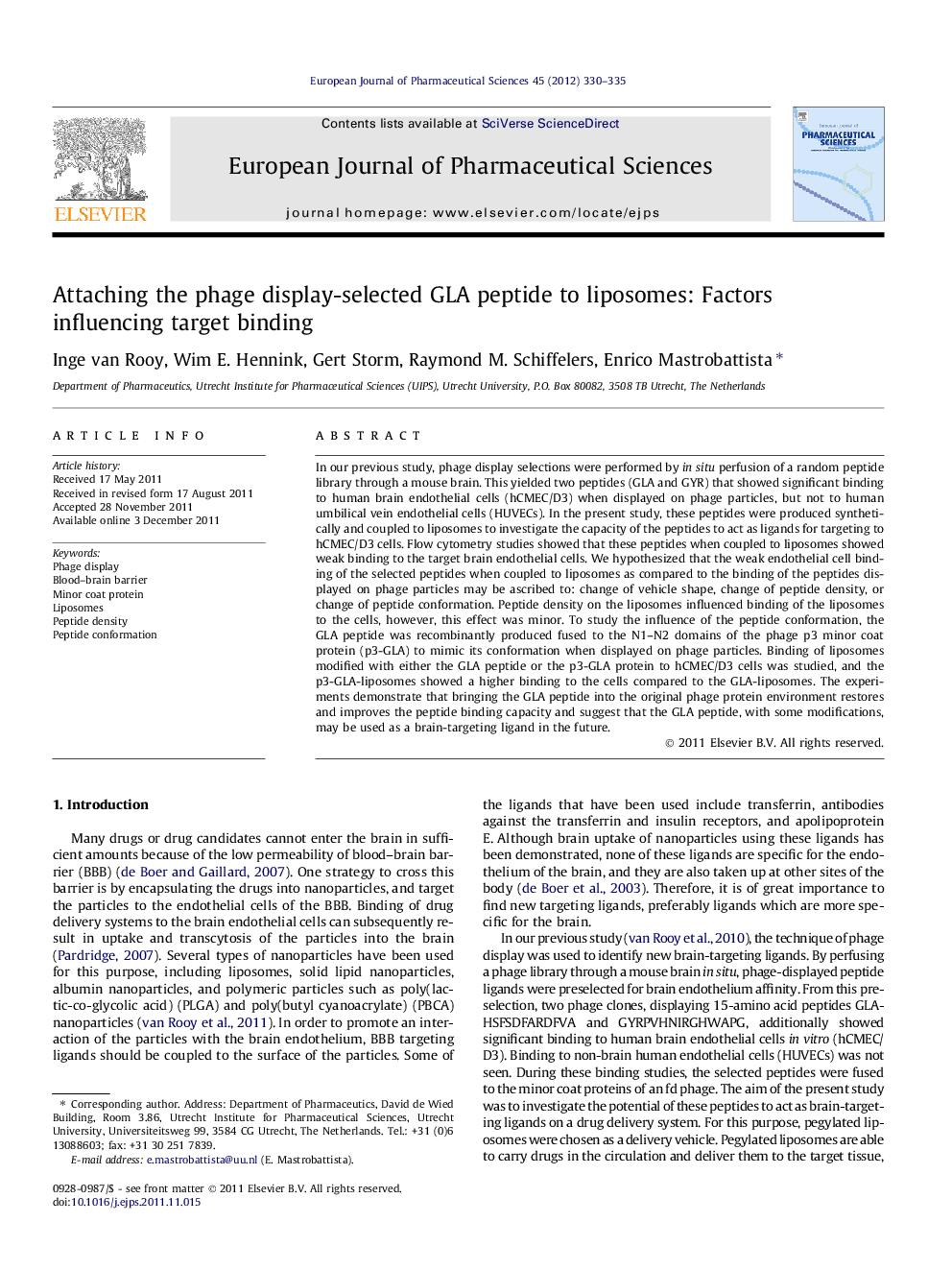| Article ID | Journal | Published Year | Pages | File Type |
|---|---|---|---|---|
| 2480773 | European Journal of Pharmaceutical Sciences | 2012 | 6 Pages |
Abstract
In our previous study, phage display selections were performed by in situ perfusion of a random peptide library through a mouse brain. This yielded two peptides (GLA and GYR) that showed significant binding to human brain endothelial cells (hCMEC/D3) when displayed on phage particles, but not to human umbilical vein endothelial cells (HUVECs). In the present study, these peptides were produced synthetically and coupled to liposomes to investigate the capacity of the peptides to act as ligands for targeting to hCMEC/D3 cells. Flow cytometry studies showed that these peptides when coupled to liposomes showed weak binding to the target brain endothelial cells. We hypothesized that the weak endothelial cell binding of the selected peptides when coupled to liposomes as compared to the binding of the peptides displayed on phage particles may be ascribed to: change of vehicle shape, change of peptide density, or change of peptide conformation. Peptide density on the liposomes influenced binding of the liposomes to the cells, however, this effect was minor. To study the influence of the peptide conformation, the GLA peptide was recombinantly produced fused to the N1-N2 domains of the phage p3 minor coat protein (p3-GLA) to mimic its conformation when displayed on phage particles. Binding of liposomes modified with either the GLA peptide or the p3-GLA protein to hCMEC/D3 cells was studied, and the p3-GLA-liposomes showed a higher binding to the cells compared to the GLA-liposomes. The experiments demonstrate that bringing the GLA peptide into the original phage protein environment restores and improves the peptide binding capacity and suggest that the GLA peptide, with some modifications, may be used as a brain-targeting ligand in the future.
Related Topics
Health Sciences
Pharmacology, Toxicology and Pharmaceutical Science
Drug Discovery
Authors
Inge van Rooy, Wim E. Hennink, Gert Storm, Raymond M. Schiffelers, Enrico Mastrobattista,
